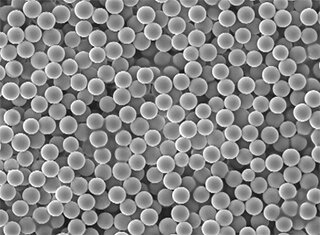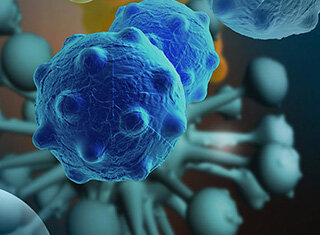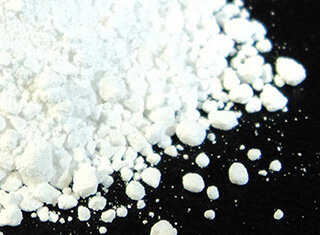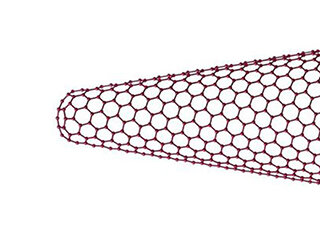Particle size analysis of nanoparticles in highly turbid dispersions from 0.5 nm to 10,000 nm based on dynamic light scattering
In general, the acquisition of scattered light intensities of particles under thermal motion is deployed for nanoparticle characterisation (principle of dynamic light scattering (DLS)). The NANOPHOX CS combines photon cross-correlation spectroscopy (PCCS) with a innovative, patent pending polarisation-separated backscattering technology (Psb PCCS), which allows for high resolution nanoparticle size analysis in high concentrated suspensions and emulsions ranging from 0.5 nm to 10,000 nm. With only small sample effort, meaningful and repeatable measurements below one minute of sample material in original concentration are realised. Particle size, distribution width and polydispersity are determined just as reliably as the stability of the dispersion with this variant of dynamic light scattering.
The goal of every particle analysis is to obtain unbiased measurement results. The foundation for reliable results lies in a product-specific analysis of the sample in its original state. The PsB PCCS implemented in the NANOPHOX CS offers concentration-independent particle characterisation of nanoparticles in opaque suspensions and emulsions. This measurement method eliminates multiple scattered light, raises the signal-to-noise ratio to a new level, allowing higher sample concentrations with shorter measurement times and improved repeatability and accuracy.
Similar results cannot be achieved with photon correlation spectroscopy (PCS), which is traditionally used in dynamic light scattering. PCS uses the autocorrelation of the scattered light intensities to determine the particle size distribution. However, the traditional technique requires extremely dilute samples, as correct measurement of particle size is not possible due to the multiple scattering that occurs. The resulting sample preparation is time-consuming and error-prone, as this leads to changes in the particle size distribution and stability of the sample.

The application of the cross-correlation technique allows the calculation of the particle size distribution without the influence of multiple scattering. Comparability between conventional PCS and PCCS can be established by measuring a concentration series with monomodal suspensions of 100 nm polystyrene standards.

Five latex samples represent a spectrum ranging from the undiluted suspension with 1 % solids per volume to a dilution level of 1:10,000. For measurements in PCCS mode, the measured hydrodynamic diameter varies between 97 nm and 106 nm and is thus within specifications - regardless of dilution. The PCS results, on the other hand, deviate from the specifications for concentrated samples above a dilution of 1:1,000. The determination of reliable particle sizes with PCS starts at 5,000-fold dilution. PCCS achieves correct results already in the concentrated latex sample.
With the PsB PCCS, the NANOPHOX CS revolutionises dynamic light scattering and takes the advantages of PCCS to the next level. With sample concentrations up to a hundred times higher and measurements up to ten times faster, reliably repeatable measurement results are achieved with accuracy at a maximum.
- Concentration-independent characterisation of particle size and particle size distribution
- For nanoparticles in turbid suspensions and emulsions
- For analyses in research, development or quality laboratories
- Robust method for measuring ranges from 0.5 nm to 10,000 nm
- High signal quality due to 3D correlation with polarisation-separated Backscattering [patent pending]
- Simple sample preparation without dilution series | Elimination of sample preparation errors and sample contamination
- Measurability check of the sample before starting the measurement
- Short measuring times of < 1 - 3 min. typical
- Enables investigations of special effects such as particle-particle interactions and viscosity changes of highly concentrated samples
- High sensitivity for size changes and measurement of bimodal distributions
- Contactless measuring method for in-situ observations of stability or size changes, e.g., growth or crystallisation processes
- Direct measurement method of the stability, agglomeration and sedimentation of slightly charged (electrostatically stabilised) to non-charged (sterically stabilised) particles of turbid samples
Download more information about NANOPHOX
Forgot your password?
Please enter your username or email address. Instructions for resetting the password will be immediately emailed to you.
Are you interested in additional content? Please register an account. After confirming the registration link brochures, application notes and other documents on particle measurement will be available for download.
Watch the NANOPHOX teaser video!
With measurement times from less than one minute, users can quickly achieve reliable measurement results with the NANOPHOX CS. Time-consuming sample dilution series can be ruled out, as measurements can be carried out in even highly concentrated samples. Time and sample preparation errors are reduced and possible sample impurities are minimised, which can significantly influence the particle distribution in highly diluted samples.
The automatic positioning of the cuvette and the precise adjustment of the laser intensity to optimise the measurement signal are particularly user-friendly. This supports fast and easy measurement. NANOPHOX CS can be operated with disposable cuvettes made of acrylic glass. For special liquids or applications, glass cuvettes or solvent-resistant cuvettes (up to 4 ml) are available. For small sample volumes, a micro cuvette is used, which makes the analysis of 50 µl to 2.7 ml sample material possible.
NANOPHOX CS covers the vast particle size range of 0.5 nm to 10,000 nm. The size analysis is independent of concentration and masters high concentrations up to approximately 40 % by volume.
With a precisely controlled temperature range from 0°C to 90°C the behaviour of nano dispersions can be observed or influenced, respectively. NANOPHOX CS proves its specific performance for stability analysis of steric or electrostatic stabilising in high-concentrated nano dispersions. No matter if the particles have been stabilised with electric charges, polymers or surfactants, NANOPHOX CS reliably provides information on aggregation or agglomeration behaviour. Thus, new opportunities for characterization in previously uncharted fields, such as particle-particle interactions and changes in dynamic viscosity, are easily accessible.
Typical applications are polymer suspensions and emulsions in the chemical sector, pharmaceutical emulsions such as ophthalmic emulsions (eye drops), propofol, infusion emulsions or liposomes. In medicine and biochemistry, nanoparticles can serve as active ingredient carriers or be equipped as active ingredient carriers for specific functions. In the field of oxides (ZnO, AI2O3, TiO2, SiO2) and metal colloids (gold, silver, palladium), but also paints, varnishes and inks, as well as general research into nanomaterials, the NANOPHOX CS is suitable.
As a common control and evaluation platform for all Sympatec systems, PAQXOS combines our accumulated metrological expertise in a user-friendly application software. PAQXOS provides automatic settings for all measurement parameters of particle size analysis, optimally adjusts them, checks the measurability of the sample before and during the measurement and outputs the signal quality for orientation during and after the measurement. The laser intensity and the positioning of the cuvette are adjusted to the respective application under software control before each measurement. This makes complex measurements very easy for the user and NANOPHOX CS is a practical instrument for valid particle size and particle stability measurement.
A step-by-step wizard with built-in expert knowledge also leads the inexperienced user to successful measurements. PAQXOS provides graphical presentations, tables and paper reports that can be chosen from a variety of predefined and fully customisable formats. The intuitive graphical user interface supports the execution of reliable, meaningful measurements. The cross-correlation function, representing reproducibility and stability, is used to calculate the particle size distribution.
In addition to the classic 2nd Cumulant evaluation PAQXOS offers a distinctly more efficient Non-Negative Least Square (NNLS) algorithm. The NNLS evaluation mode reliably presents polydisperse or bimodal samples with up to 256 size classes directly as volume or intensity-based distribution. Characteristic values such as the arithmetic or harmonic mean values (xharm) of single modes are directly available. Our versatile PAQXOS software is ideally suited for demanding production and research applications.
An integrated scripting environment allows for the programming of elaborate routines to design repeat measurements in an efficient and reproducible manner. Furthermore, predefined measurement parameter settings may be implemented as binding Standard Operating Procedures | SOPs. Our software also meets the requirements of FDA-regulated pharmaceutical industries and provides all safety functions, access controls and authentication methods stipulated in regulation 21 CFR Part 11 regarding electronic records and electronic signatures to ensure data integrity and prevent manipulation of records.





















